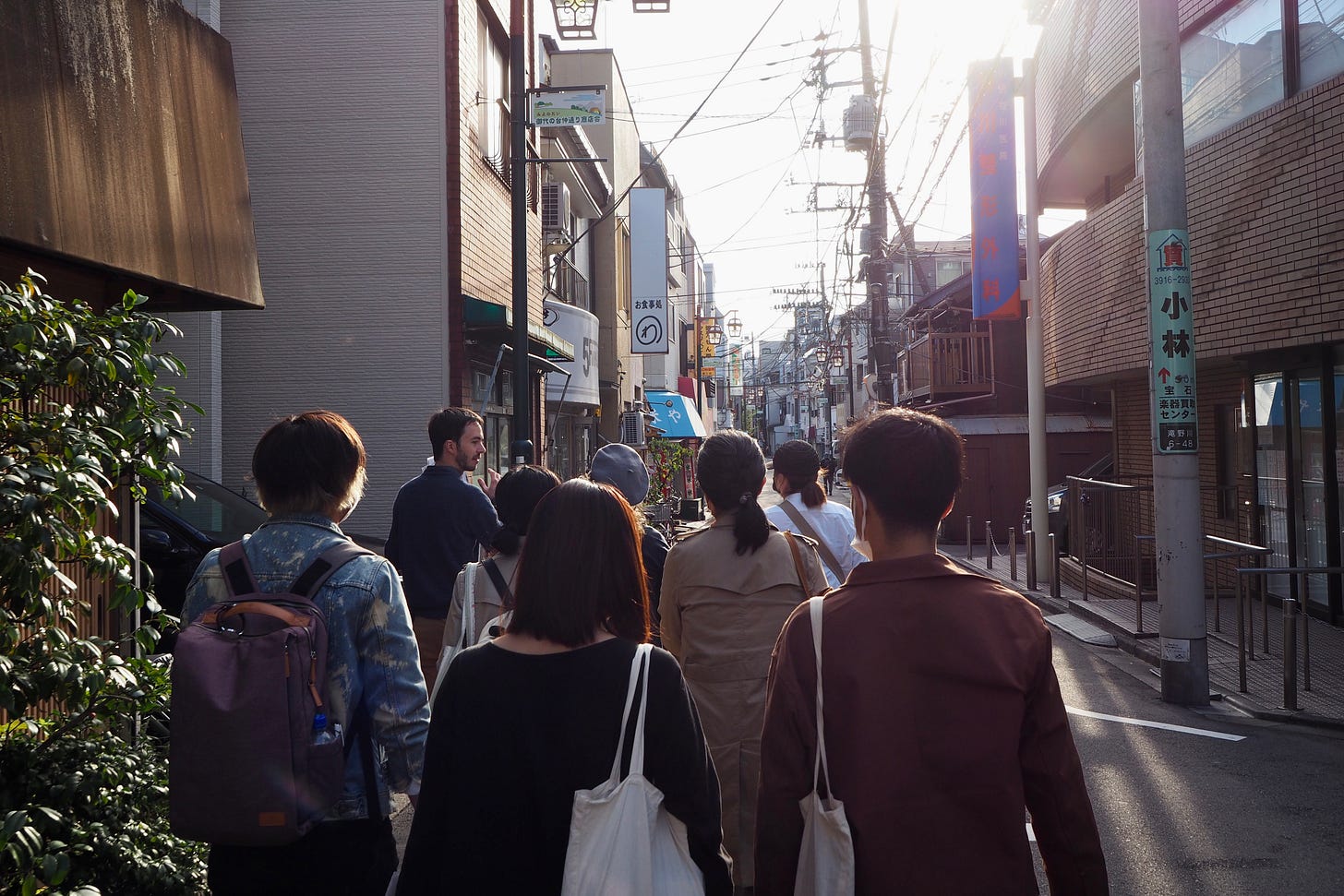Tokyo tours
I offer walking tours of Tokyo that go deep into themes related to my projects, rooted in my personal experience of the city, academic background in urban studies, and years of local research.
Fill out this form to be added to the mailing list for future group tours (once every 1~2 months), or email me if you are interested in a private tour.
Sento tour: bathhouses and the origins of a Tokyo neighborhood
More than 2,600 public baths were once spread across Tokyo, anchoring small neighborhood networks of residences, shopping streets, and common spaces. This tour begins in my local neighborhood and follows the path of the old Nakasendo to Inari-yu, the public bath and cultural property in Takinogawa that I have been involved with since 2020. More than five years of community building and local research have contributed to a rich historical narrative of everyday life that shifts between Edo, the early 20th century, and today. We end at Inari-yu and Inari-yu Nagaya, where we can bathe and enjoy drinks (around 7,000 steps)
Read the introduction to the walk here:
Postwar Tokyo tour: ruins, black markets & occupation
Tokyo was destroyed and reemerged from the ruins twice in the 20th century. I’m developing this walk across two sections of eastern and western Tokyo as a way to ponder perhaps the most formative, yet now largely invisible event that shaped the city in the 20th century: the WWII air raids. This walk begins in Ryogoku, the center of destruction and memorialization of the 1923 earthquake and 1945 firebombings. From there, we cross the river to wander through several “shitamachi” neighborhoods that survived the bombing, and dig into the black market roots of the subculture mecca of Akihabara (we’ll peek into some subculture stuff too). Nearby, we’ll drop by two of my favorite spaces in central Tokyo, Yushima Seido and Hijiri Bridge, and then catch the metro across town to Yoyogi and Roppongi to understand how the geography of the American occupation has shaped the modern city, using old maps and encountering traces of past and present military bases. Lastly, we walk through the back streets of Akasaka to Tokyo Little House, and view some of the collection of rare books and magazines over coffee (around 20,000 steps)



